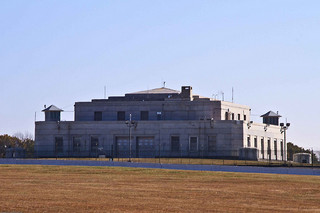 Before I explain why, let me give you an example: After the great stock and real estate market crash of 2008, the government went on a stimulus rampage printing trillions of dollars, first, to bail out all of the institutions that caused the problem in the first place, and then to stimulate the economy by attempting to get more money into the system. This money print was the biggest intervention that the world had ever seen and was counted in trillions of dollars. It is still going on today through QE3 at a rate of $80 billion per month. Therefore, any thinking person on the surface would have assumed that this would eventually cause inflation. But it didn’t. In July of 2007, as the market started to slide downward off its peak, the inflation rate in the US was 2.36%, and here we are today, 6 years and trillions of printed dollars later, and our inflation rate as of April 2013 was 1.06%. So, not only do we not have an inflation problem, it actually continues to look like we have a deflation problem. So how could this be?
Before I explain why, let me give you an example: After the great stock and real estate market crash of 2008, the government went on a stimulus rampage printing trillions of dollars, first, to bail out all of the institutions that caused the problem in the first place, and then to stimulate the economy by attempting to get more money into the system. This money print was the biggest intervention that the world had ever seen and was counted in trillions of dollars. It is still going on today through QE3 at a rate of $80 billion per month. Therefore, any thinking person on the surface would have assumed that this would eventually cause inflation. But it didn’t. In July of 2007, as the market started to slide downward off its peak, the inflation rate in the US was 2.36%, and here we are today, 6 years and trillions of printed dollars later, and our inflation rate as of April 2013 was 1.06%. So, not only do we not have an inflation problem, it actually continues to look like we have a deflation problem. So how could this be?
It’s all about the banks and the way our banking system works. Let’s say you are a bank and you have a billion dollars worth of treasury and mortgage bonds on your balance sheet, and the government comes knocking on your door, offering to buy those bonds from you at a great price, allowing you to get them off your balance sheet. You decide to sell those bonds to the government, since they are paying almost no return and might even be risky if they are mortgage bonds. Here is the key: when the government takes those bonds from you, they don’t drive a truck over to your bank and give you the cash. They simply increase your reserve account in the virtual world of digital money, improving your balance sheet as a bank and improving your finances, as a business, but not necessarily stimulating spending from your customers. For that to actually happen, you the banker, need to lend that money out to businesses and consumers who will eventually go out and spend it in the real economy and cause inflation. Well, lending requirements today are stricter than ever before, and aging baby boomers are much more interested in paying down their debt than increasing it. Banks are asking for record down payments on real estate transactions, and banks are finding it more attractive to invest their reserves in stocks and corporate bonds than take the risk that when the next crisis occurs, they are left holding a bunch of bad loans.
So, because of the way our banking system is structured, it is possible to print trillions of dollars and not be able to re-inflate the economy. If massive government stimulus has not been able to re-inflate the real economy, it means that you need to be super cautious coming into the summer and should be sweeping your portfolios for potential landmines now, before the next major crisis hits.
* * * * *
Information presented in this blog post is believed to be factual and up-to-date, but we do not guarantee its accuracy and it should not be regarded as a complete analysis of the subjects discussed. Discussions and answers to questions do not involve the rendering of personalized investment advice, but are limited to the dissemination of general information and may not be suitable for all readers. A professional adviser should be consulted before implementing any of the strategies presented.
